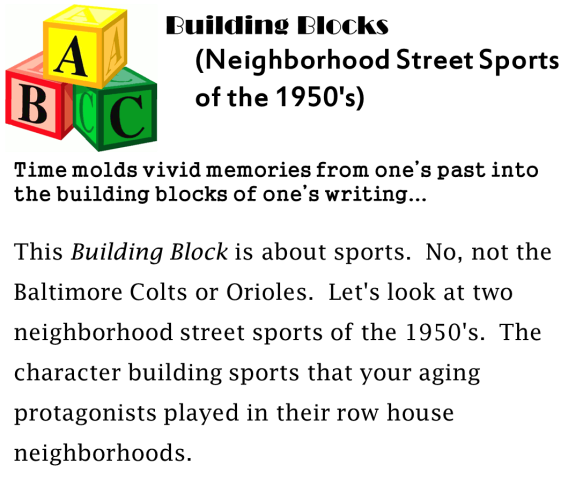 The greatest overall improvement to neighborhood street sports was the introduction of electric street lamps. One source says Baltimore has 80,000 conventional street lights; now being replaced by LED lighting. (And no, I do not remember gas lamps!) The second improvement was the new row house neighborhoods built following World War II, which provided nicer playing ‘fields’. Number three was the Pensie Pinkie, made by the Penn tennis ball company. This pink ball, the size of a tennis ball, had bounce!
The greatest overall improvement to neighborhood street sports was the introduction of electric street lamps. One source says Baltimore has 80,000 conventional street lights; now being replaced by LED lighting. (And no, I do not remember gas lamps!) The second improvement was the new row house neighborhoods built following World War II, which provided nicer playing ‘fields’. Number three was the Pensie Pinkie, made by the Penn tennis ball company. This pink ball, the size of a tennis ball, had bounce!
The number one detriment to neighborhood street sports outside the inner city was the dramatic increase in family owned cars in the mid- to late-1950’s.
Before we can take a look at sport number one, step ball, we must first dispel a terrible roomer. Baltimore does not have ‘stoops’! In some urban architecture, particularly row houses, a stoop is a small staircase ending in a platform and leading to the entrance of townhouse or apartment building, and comes from the Dutch word ‘stoep’. New York City may have stoops; however, the only time a kid in my neighborhood used/herd the word stoop was, “Yah, I stooped to a new level cause my mom made me kiss what’s her name happy birthday!”
Step Ball is game played against steps that were a sidewalk width from the street. Obviously, it was preferable that the steps were made of concrete, and were at least 4-5 steps high. Prior to the 1950s, many inner-city kids enjoyed marble steps. 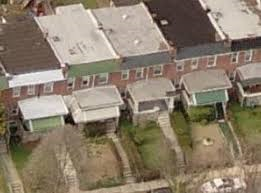 There are normally 2 players, the batter and the outfielder. The rules were like baseball; except there is no need to run bases. The playing field had a predesignated width and a length, or ‘outfield’, that extended from the curb to a point across the street; with the length divided into three ‘bases.’ Normally in a one-on-one game the far curb was the bleacher wall; where the little kids would watch from the adjacent steps.
There are normally 2 players, the batter and the outfielder. The rules were like baseball; except there is no need to run bases. The playing field had a predesignated width and a length, or ‘outfield’, that extended from the curb to a point across the street; with the length divided into three ‘bases.’ Normally in a one-on-one game the far curb was the bleacher wall; where the little kids would watch from the adjacent steps.
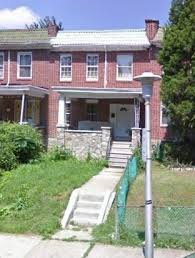 The batter would throw a tennis ball or Pensie pinky at the sharp outer edge of the middle step in an attempt to make the ball bounce from the steps and fly in the air over the head of the outfielder. If the ball did not go airborne into the street or stay within the designated field width, it was a strike. Three strikes and you were out; three outs and next batter up! If the outfielder caught the ball it was an ‘out’. The base count was determined by the distance the ball traveled before it hit the ground. Over the bleacher wall was a homerun. You could have men on all three bases and get a grand slam home run.
The batter would throw a tennis ball or Pensie pinky at the sharp outer edge of the middle step in an attempt to make the ball bounce from the steps and fly in the air over the head of the outfielder. If the ball did not go airborne into the street or stay within the designated field width, it was a strike. Three strikes and you were out; three outs and next batter up! If the outfielder caught the ball it was an ‘out’. The base count was determined by the distance the ball traveled before it hit the ground. Over the bleacher wall was a homerun. You could have men on all three bases and get a grand slam home run.
As mentioned, by the mid-to late-50’s, more cars were being parked on the street; thus reducing the available playing fields. In 1958, our new next-door neighbor would park his car a few houses away so we could play in front of my house. (Nope, that’s not my house in the pictures.)
Punchball is played just like baseball, with the only exception there was no pitcher; the ‘batter’ would toss the ball up and then punch the ball with his closed fist. Punchball was typically played on the asphalt street; sometimes at an intersection. First and third base were on the appropriate curbs, with second bass in the middle of the street. At my elementary school we had to play on mowed grass; which, of course, restricted the bounce. The key to making a home run was to punch the ball with your palm down and on the ridge of the knuckles.
Stripper Spotting: While not a neighborhood street sport in the context of the first two, it was a sport we played, and should be mentioned because a few of you are still thinking I remember gas street lamps! This late-1950-early 1960’s game was quite 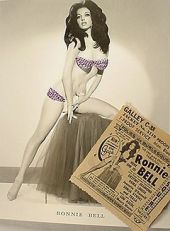 easy to play; the guys would stand on a corner on Baltimore Street and try to be the first to name the stripper who was sighted. OK, why mention gas street lamps?
easy to play; the guys would stand on a corner on Baltimore Street and try to be the first to name the stripper who was sighted. OK, why mention gas street lamps?
Monument to the First Gas Street Lamp in America
At the corner of North Holliday Street and East Baltimore Street stands a monument to the first gas street lamp in the United States. 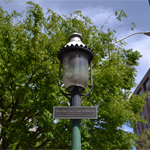 Erected in 1997, the lamp is a replica of the original. On June 11, 1816, Rembrandt Peale (February 22, 1778 – October 3, 1860), an American artist and museum keeper, invited local businessmen to his museum for a demonstration of artificial light. Peale wanted to form a business around gas lights. Several financiers aligned with Peale, forming The Gas Light Company of Baltimore (the precursor to Baltimore Gas & Electric). On February 7, 1817, the first public gas street lamp in the United States was lit in a ceremony one block south of City Hall. The Gayety Theatre is across the street; See Building Blocks (…The Block).
Erected in 1997, the lamp is a replica of the original. On June 11, 1816, Rembrandt Peale (February 22, 1778 – October 3, 1860), an American artist and museum keeper, invited local businessmen to his museum for a demonstration of artificial light. Peale wanted to form a business around gas lights. Several financiers aligned with Peale, forming The Gas Light Company of Baltimore (the precursor to Baltimore Gas & Electric). On February 7, 1817, the first public gas street lamp in the United States was lit in a ceremony one block south of City Hall. The Gayety Theatre is across the street; See Building Blocks (…The Block).
Think about your ‘building blocks’; we can not write without them.

